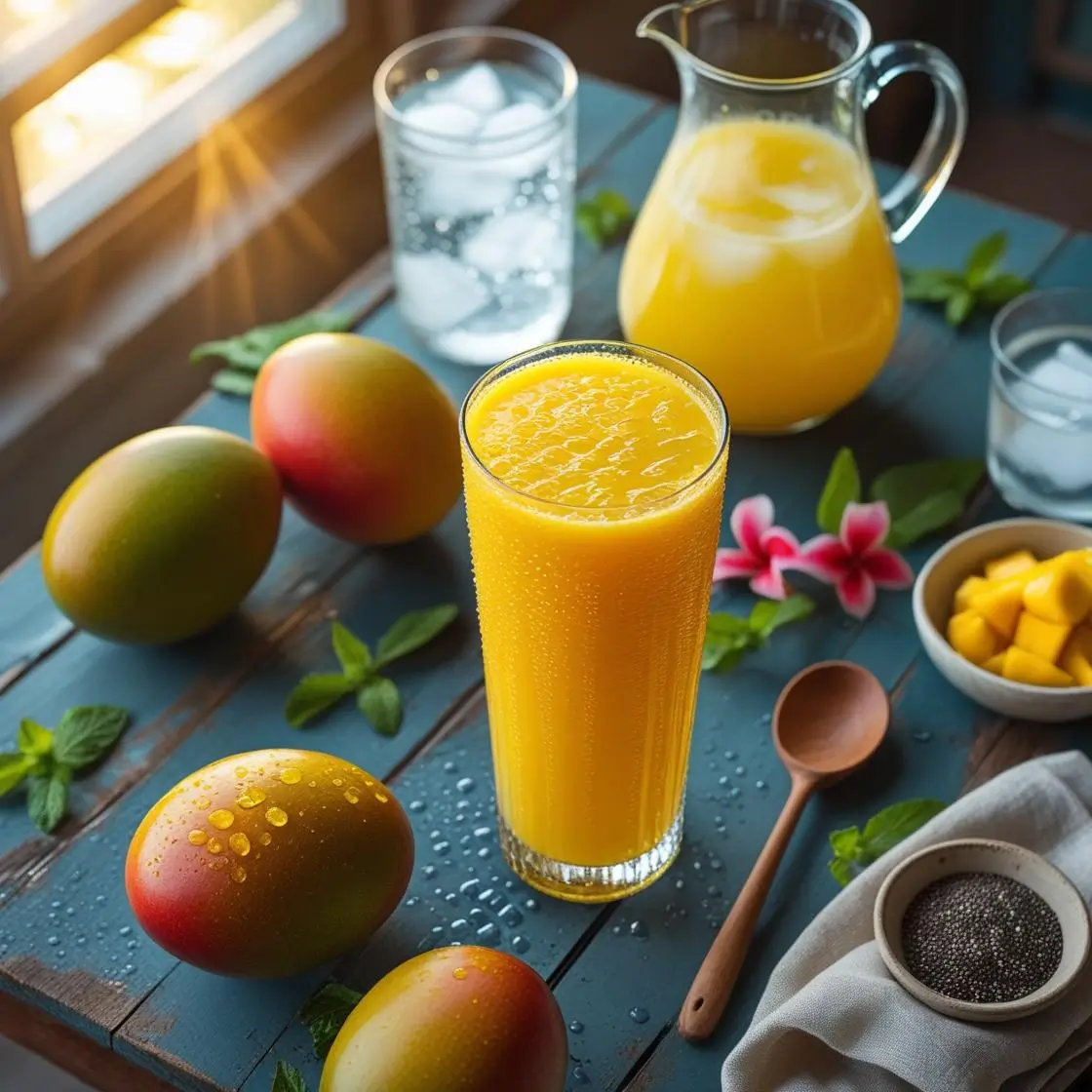When summer arrives, nothing beats the refreshing taste of homemade mango juice. Moreover, this tropical delight offers the perfect balance of sweet and tangy flavors that instantly quench your thirst. Furthermore, making mango juice at home isn’t rocket science – in fact, it’s surprisingly simple and incredibly rewarding.
Whether you’re using fresh mangoes, frozen pulp, or canned varieties, this comprehensive guide will help you create the perfect mango juice every time. Additionally, we’ll explore various techniques, health benefits, and pro tips that will elevate your juice-making game to the next level.
Table of Content
- Why Mango Juice Should Be Your Go-To Summer Drink
- Essential Liquid Components for Perfect Consistency
- Two Proven Methods for Perfect Mango Juice
- Step-by-Step Preparation Guide
- Supercharge Your Mango Juice with Healthy Add-ins
- Professional Tips for Exceptional Results
- Nutritional Benefits That Matter
- Storage and Serving Suggestions
- Understanding the Science Behind Mango Juicing
- Detailed Nutrition Information
- Other Juice Recipes
Why Mango Juice Should Be Your Go-To Summer Drink

First and foremost, mango juice stands out as one of nature’s most nutritious beverages. Unlike many commercial fruit juices, homemade mango juice retains all the natural fiber from the fruit. Consequently, this means you’re getting maximum nutritional benefits while supporting healthy digestion.
Furthermore, the fiber content helps with natural detoxification, making mango juice an excellent choice for those looking to cleanse their system naturally. In addition to its health benefits, mango juice provides that perfect sweet-tart balance that makes it incredibly satisfying on hot summer days.
What’s more, this recipe is completely kid-friendly when you skip the optional ingredients. Therefore, it’s an excellent way to ensure your little ones get essential vitamins and minerals in a delicious, appealing form.
Essential Liquid Components for Perfect Consistency
Since mangoes are naturally thick, they require additional liquid to achieve proper juice consistency. However, the choice of liquid can significantly impact both flavor and nutritional value.
Top Liquid Options:
Coconut Water: First of all, tender coconut water is arguably the best choice for mango juice. Not only does it add natural electrolytes, but it also helps neutralize the « heating » properties of mangoes according to traditional nutrition principles. Furthermore, coconut water enhances the tropical flavor profile beautifully.
Orange Juice: Similarly, orange juice creates an absolutely brilliant combination with mango. In fact, this pairing is particularly popular with children due to its familiar, sweet taste. Additionally, the citrus adds vitamin C and helps balance the overall flavor profile.
Fresh Lemon Juice: Meanwhile, lemon juice serves as an excellent flavor enhancer, especially when your mangoes are overly sweet. Moreover, it adds a bright, zesty note that prevents the juice from becoming cloying.
Plain Water: Finally, if you prefer pure mango flavor, filtered water works perfectly well. However, consider adding ice cubes for temperature control and slight dilution.
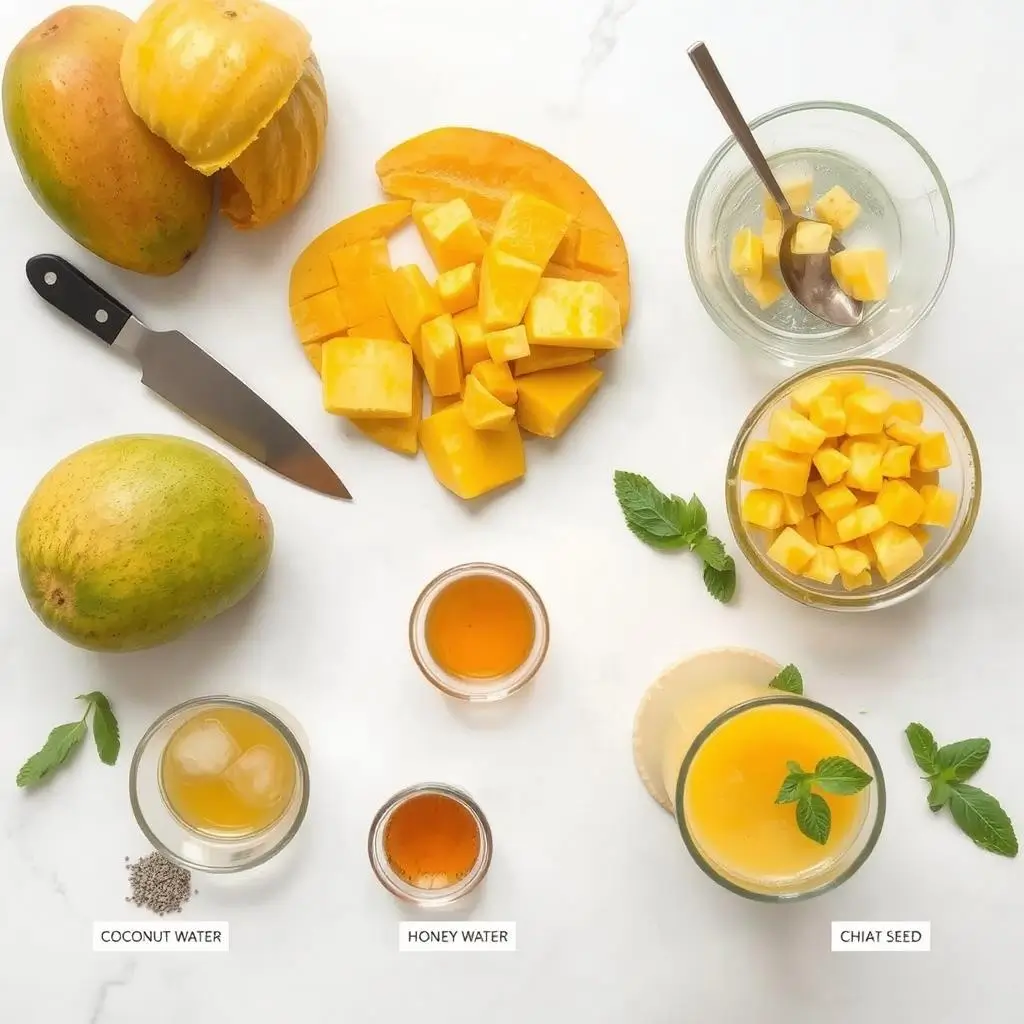
Two Proven Methods for Perfect Mango Juice
Method 1: The Make-Ahead Frozen Approach
Firstly, this method is perfect for busy households who want fresh mango juice on demand. To begin with, you’ll prepare mango puree in advance and freeze it in convenient portions.
Step-by-step process:
Initially, prepare your mango puree by blending ripe mangoes until smooth. Next, pour the puree into ice cube trays or small containers. Subsequently, freeze these portions for easy storage – they’ll keep for up to one year!
When you’re ready to enjoy your juice, simply take 4-5 frozen mango cubes and blend them with your choice of liquid. Additionally, you can add simple syrup or natural sweeteners to taste. Furthermore, if your mangoes are particularly sweet, a splash of lemon juice will provide that perfect tangy balance.
Method 2: Fresh Mango Magic
On the other hand, if you prefer working with fresh fruit, this method delivers incredible results. Although it requires a bit more preparation time, the fresh approach often yields superior flavor and texture.
Moreover, when working with fresh mangoes, you have complete control over ripeness and quality. Consequently, you can select the perfect fruits for optimal taste and nutritional content.
Step-by-Step Preparation Guide
Preparing Your Mangoes:
To begin with, select ripe mangoes – Alphonso varieties work exceptionally well due to their intense flavor and creamy texture. Next, wash the mangoes thoroughly under running water. Subsequently, peel and dice them into manageable chunks.
The Blending Process:
First, add your mango pieces to a high-speed blender. Then, incorporate your chosen sweetener – honey or sugar work equally well. After that, add any optional ingredients like ginger or mint leaves.
Next, pour in your selected liquid gradually while blending. Meanwhile, add ice cubes for temperature control, but avoid overdoing it as too much ice can dilute the flavors significantly.
Finally, blend until you achieve a smooth, pourable consistency. If the mixture seems too thick, gradually add more liquid until you reach your desired texture.
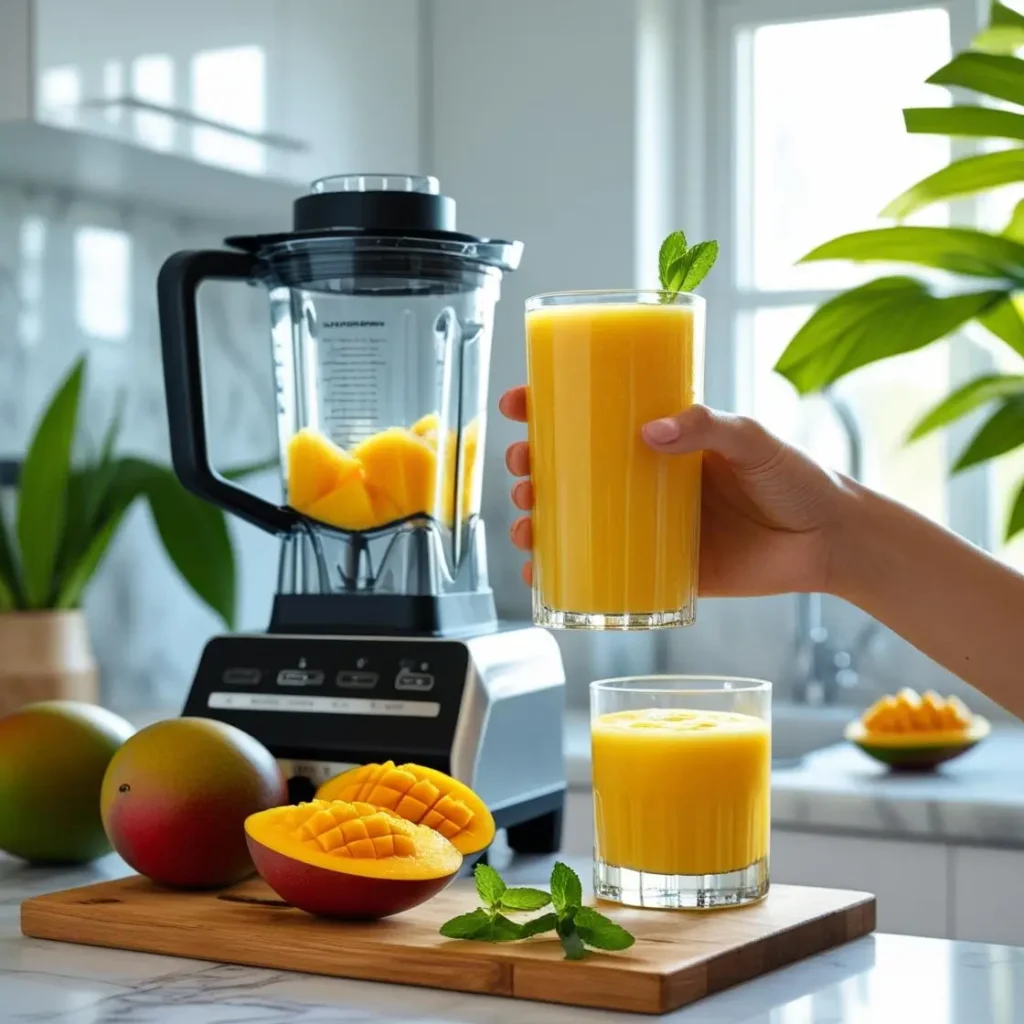
Supercharge Your Mango Juice with Healthy Add-ins
Nutritional Boosters:
Sabja or Chia Seeds: Notably, these tiny powerhouses add omega-3 fatty acids, fiber, and protein to your juice. Moreover, they create an interesting texture that many people find appealing. However, remember to soak them beforehand for optimal results.
Fresh Mint Leaves: Additionally, mint adds a refreshing twist that complements mango’s sweetness beautifully. Nevertheless, keep in mind that mint may slightly alter the juice’s color, turning it more greenish.
Fresh Ginger: Furthermore, a small piece of ginger adds warmth and digestive benefits. However, use sparingly as ginger can be overpowering, especially for children’s palates.
Professional Tips for Exceptional Results
Flavor Optimization:
For authentic mango flavor, stick to the basics: mangoes, water, and minimal sweetener. However, if you want to experiment, the mango-orange combination consistently delivers outstanding results.
Health Enhancement:
Furthermore, incorporating tender coconut water and even small pieces of tender coconut meat can boost the nutritional profile significantly. Moreover, this combination provides natural electrolytes that are perfect for summer hydration.
Consistency Control:
Most importantly, aim for a « pourable but thick » consistency. This texture ensures you’re getting substantial nutrition while maintaining that satisfying juice experience.
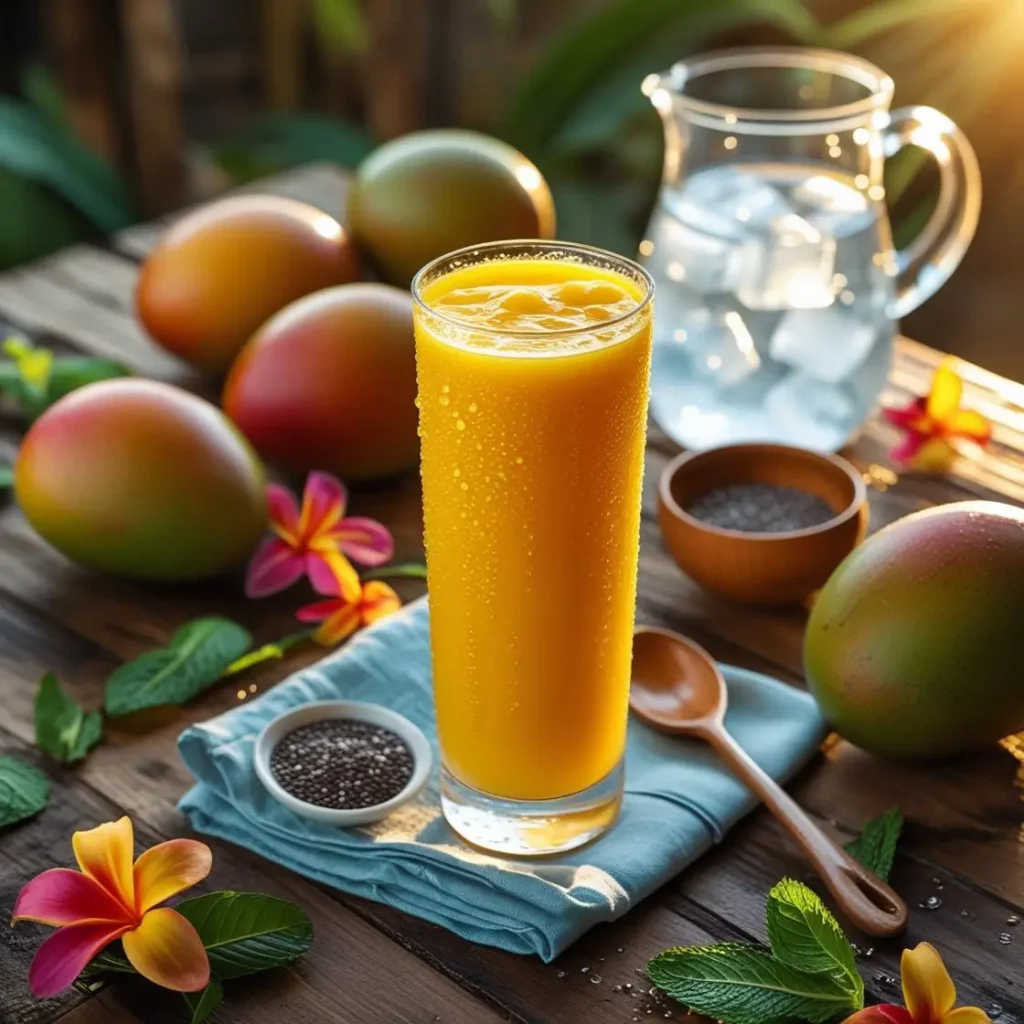
Nutritional Benefits That Matter
Mango juice provides impressive nutritional value, including high levels of vitamin A, vitamin C, dietary fiber, and natural antioxidants. Additionally, when you include coconut water, you’re adding potassium and natural electrolytes.
Moreover, the retained fiber supports digestive health and helps regulate blood sugar levels more effectively than fiber-free juices. Consequently, homemade mango juice offers sustained energy rather than quick sugar spikes.
Storage and Serving Suggestions
Fresh mango juice tastes best when consumed immediately. However, if you need to store it, refrigerate for no more than 24 hours for optimal flavor and nutrition. Additionally, give it a good stir before serving as natural separation is normal.
Furthermore, serve your mango juice over ice in tall glasses for the most refreshing experience. Finally, garnish with fresh mint leaves or a lime wedge for an elegant presentation that’s sure to impress.
Understanding the Science Behind Mango Juicing
Interestingly, mangoes can’t be processed through traditional juice extractors like other fruits. This is because mangoes are high-fiber fruits, and surprisingly, most of their flavor and nutrition is actually contained within that fiber. As a result, traditional juicing methods would strip away the very elements that make mango juice so beneficial.
Instead, we use blending techniques that preserve the fiber while creating that perfect juice consistency. Moreover, this method ensures you’re getting the complete nutritional profile of the mango, not just the liquid portion.
Detailed Nutrition Information
Per Serving (1 glass, approximately 8 oz)
Based on recipe using fresh mangoes, coconut water, and honey
- Calories: 145
- Total Fat: 0.6g
- Saturated Fat: 0.2g
- Cholesterol: 0mg
- Sodium: 25mg1
- Total Carbohydrates: 37g
- Dietary Fiber: 3.2g
- Total Sugars: 32g
- Added Sugars: 8g
- Protein: 1.1g

Other Juice Recipes
In summary, making perfect mango juice at home is both simple and rewarding. Whether you choose the make-ahead frozen method or prefer working with fresh fruit, these techniques will help you create delicious, nutritious beverages that rival any store-bought version. Most importantly, you’ll have complete control over ingredients, ensuring your family enjoys the purest, healthiest mango juice possible.
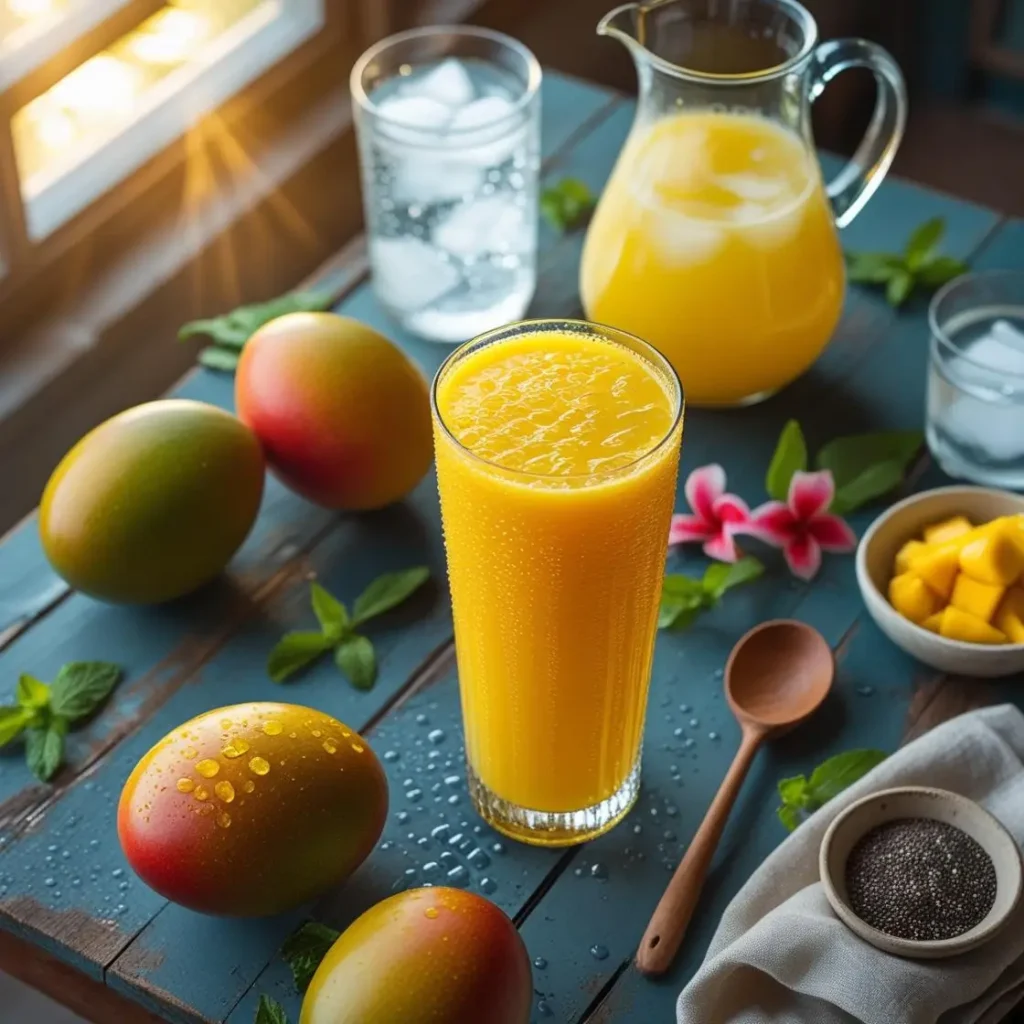
The Ultimate Mango Juice Recipe: Fresh, Healthy, and Irresistibly Delicious
Description
« Fresh homemade mango juice recipe with step-by-step instructions. Naturally sweet, fiber-rich, and perfect for kids. Ready in 10 minutes! »
Ingredients
For Fresh Mango Method:
Liquid Options (choose one):
Optional Add-ins:
For Frozen Pulp Method:
Instructions
- Prepare Mangoes: Wash 2 large ripe mangoes thoroughly. Peel and dice into small chunks, removing the pit completely.
- Add Base Ingredients: Place diced mangoes and sweetener (sugar/honey) in a high-speed blender.
- Add Optional Flavors: If using, add mint leaves, ginger piece, or lemon juice now.
- Blend Initial Mix: Pulse a few times to break down the mango pieces.
- Add Liquid Gradually: Pour your chosen liquid slowly while blending to achieve desired consistency.
- Add Ice: Include 6-8 ice cubes and blend on high speed for 60-90 seconds until completely smooth.
- Check Consistency: The juice should be pourable but thick. Add more liquid if too thick, or more mango if too thin.
- Final Touch: If using sabja/chia seeds, stir them in after blending.
- Taste and Adjust: Add more sweetener or lemon juice as needed.
- Serve Immediately: Pour into tall glasses and serve with ice.
- Prepare Pulp: Remove 4-5 frozen mango cubes from freezer.
- Blend with Liquid: Add frozen cubes, sweetener, and 3/4 cup liquid to blender.
- Achieve Smooth Texture: Blend on high until completely smooth and creamy.
- Adjust Consistency: Add more liquid if too thick, or more frozen cubes if too thin.
- Serve: Pour and enjoy immediately.
Method 1: Fresh Mango Juice
Method 2: Frozen Pulp Method
Notes
- Mango Selection: Choose mangoes that yield slightly to pressure but aren’t mushy. Alphonso varieties provide the best flavor.
Sweetener Guide: Start with less sweetener and add more as needed – mango sweetness varies significantly.
Color Note: Adding mint will create a greenish tint, which is completely natural.
Storage: Fresh juice is best consumed immediately but can be refrigerated for up to 24 hours.

